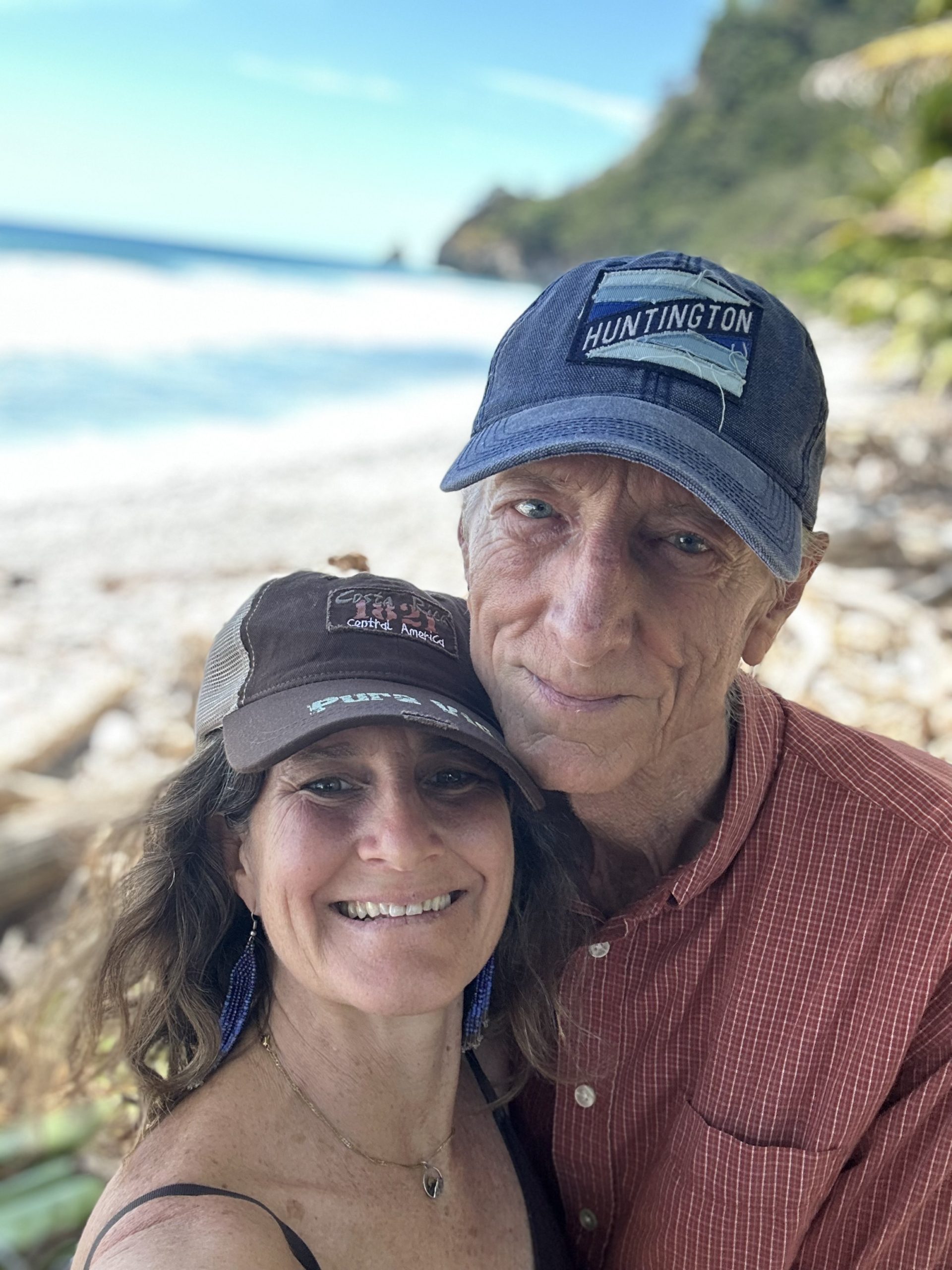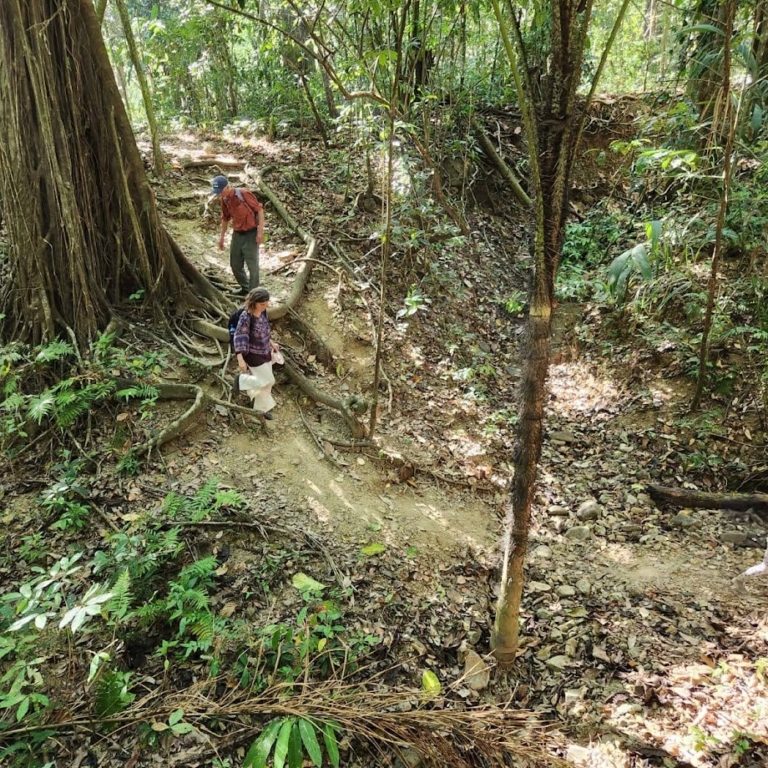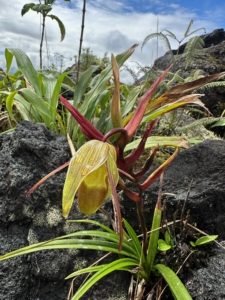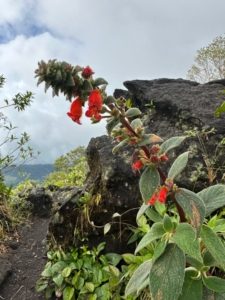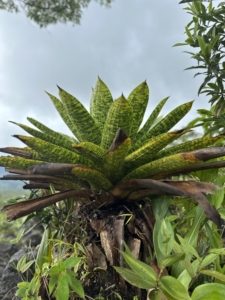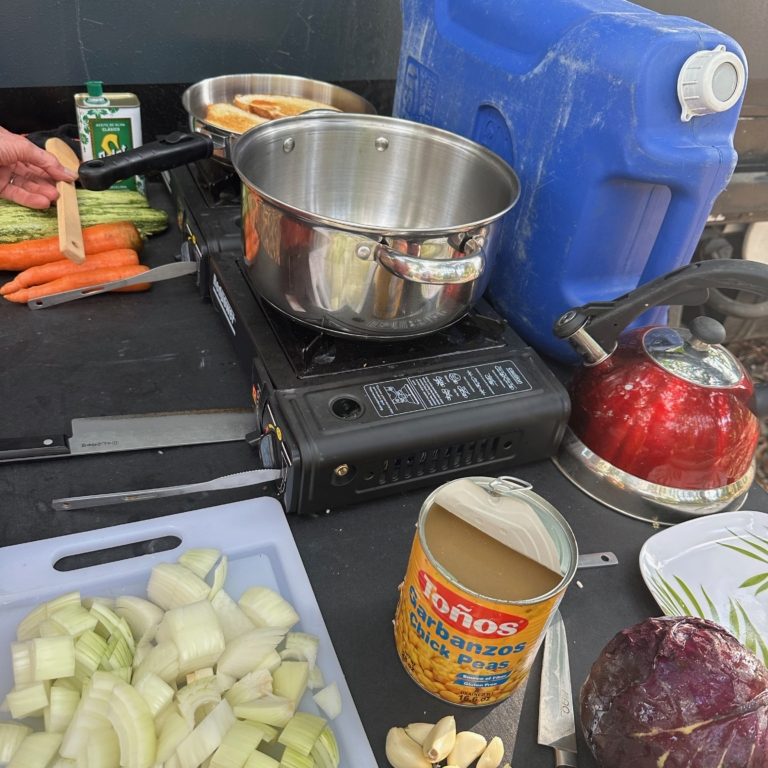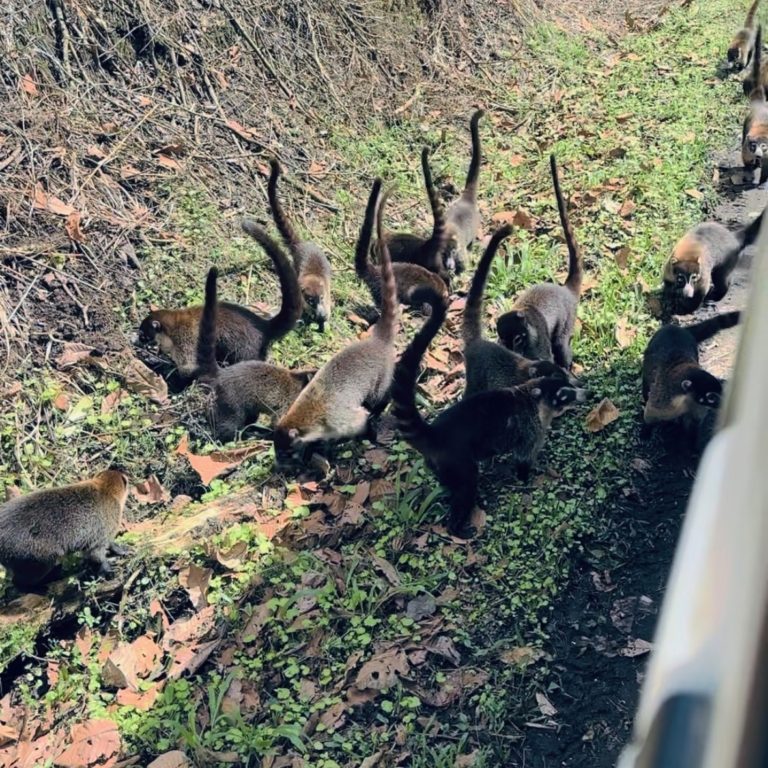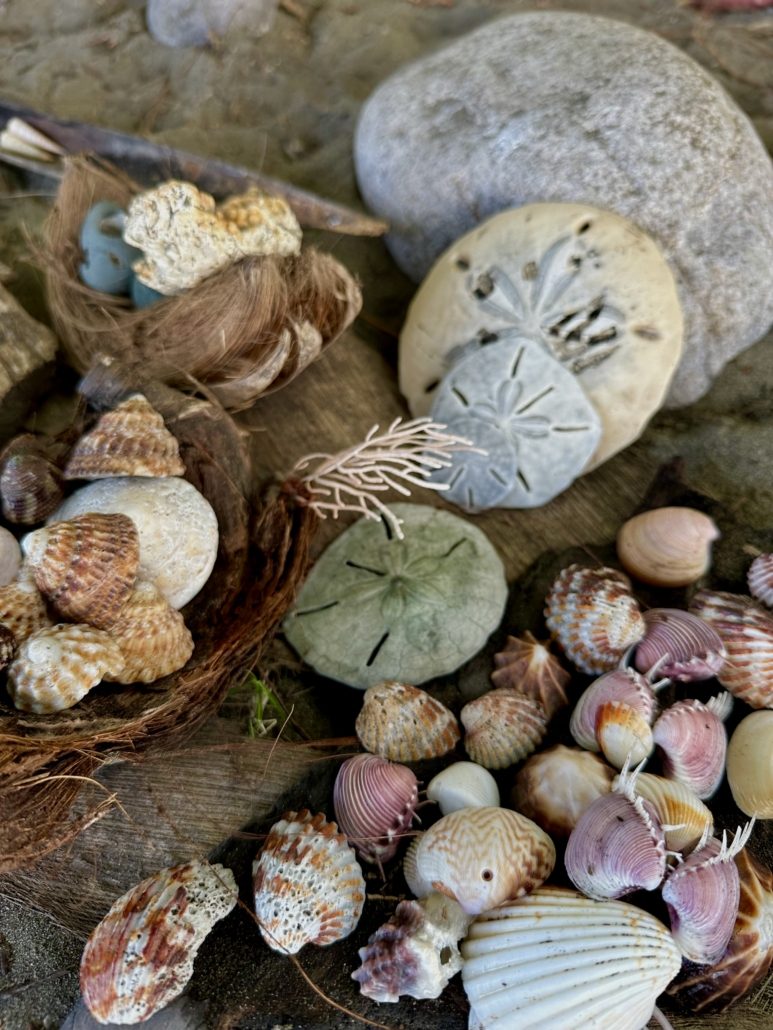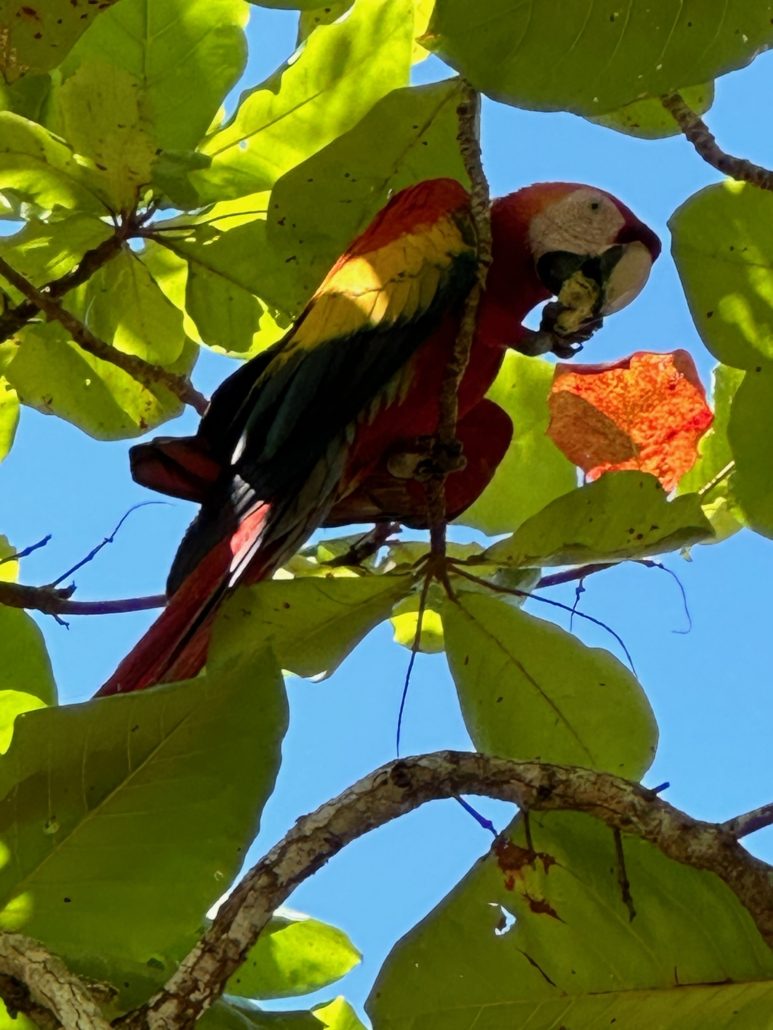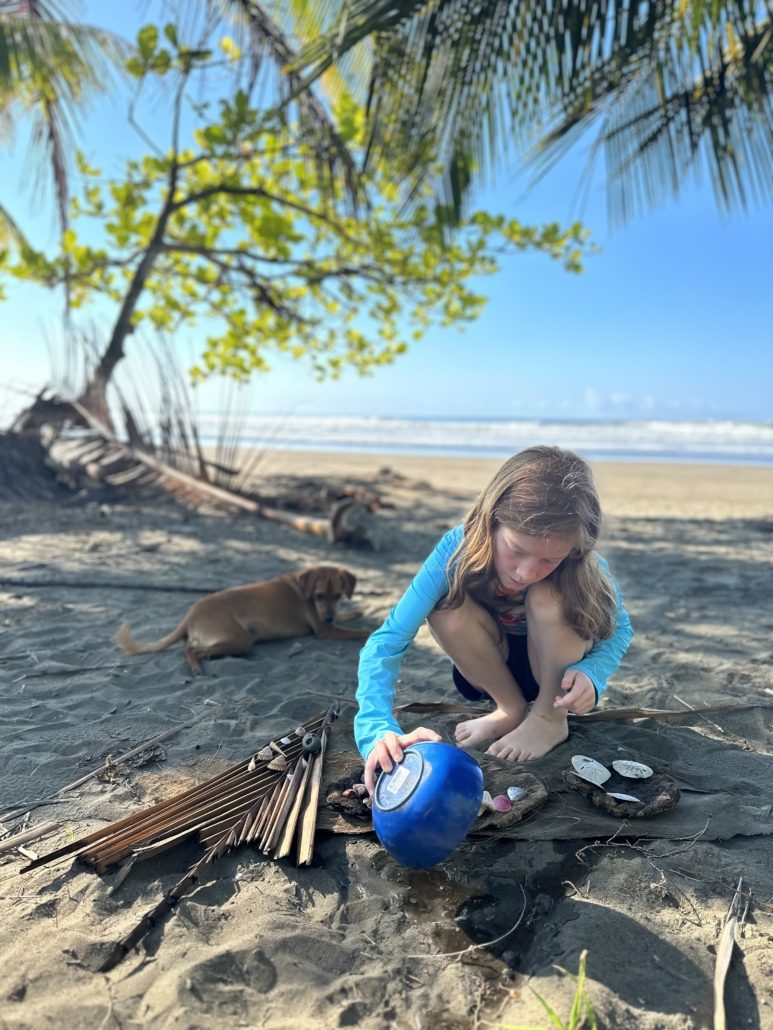Costa Rica and Thoughts on Traveling

The route we took in our 4×4 camper.
It’s February, the high and dry season in Costa Rica, and Hart rented a 4×4 camper from Nomad America. This was the strangest trip I’ve ever taken as I had no desire to go, but wanted to support Hart in this fantasy he’s had since we got married, of trekking around Costa Rica in a camper. Nadia was keen on going, so I came along. I spent almost three months in CR in 2008 and that was enough for me. I long to go to Mongolia or Ireland though. But I know there are worse things than being invited to leave winter and go to a tropical country, so I made the best of it.
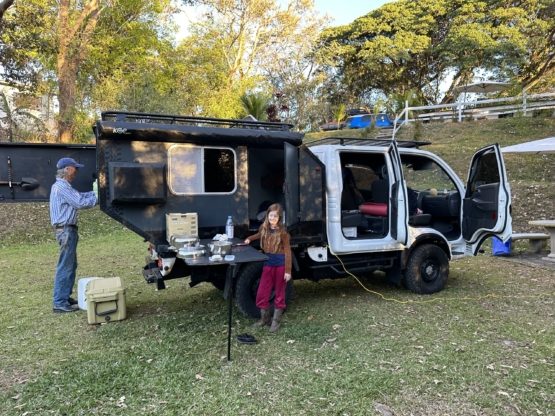
Nadia with Bongo, our home for the trip, in the camping yard of Nomad America.
I walked around the grounds at Nomad and began greeting the tropical plants- sensitive plant, clumping giant golden bamboo, verbenas, ficus trees, and this gorgeous red passionflower.
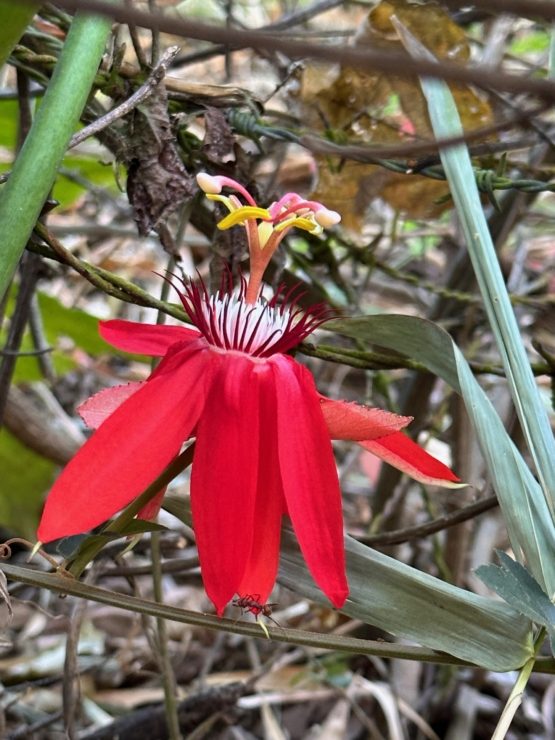
Although CR is about the size of West Virginia, the roads can be rough and the ecosystems are many, which makes it feel huge! Since both Hart and I had spent the most time on the Caribbean side of the country in our previous visits, and we only had 16 days, we focused on the Pacific side this time. Our first stop was Monteverdi. We were welcomed by peaceful-looking, white Brahmin cows and rainbow after rainbow as we drove up and up, into a cloud forest.
The sound of the cicadas was loud and pulsing even though we were told they would reach their climax a month from now. First thing we looked for was a fruit stand and we pulled over at someone’s casa with their teenager selling all the good ones- papaya, mango, banana, cantaloupe, passionfruit, oranges, pineapple and a new fruit I didn’t know until this trip, called caimito or star apple.
I was eager to get to our first campsite, which Diego at Nomad had recommended, before it got dark. Everybody said to not drive after dark, as the roads have too many potholes and in some places it suddenly becomes one lane because half of the road has just fallen away. Plus animals are crossing and pedestrians are walking on the road and you can’t see them. Which doesn’t give you much time, because being that CR is near the Equator, it gets dark by 6pm. On the flip side, it’s light by 5ish and everyone that we encountered was up and going by 6am. But if any American could drive well in Costa Rica, it would be Hart. He was/is a phenomenal driver. Confident, calm, steady and his spatial awareness and ability to manipulate the large vehicle we were in–wow–it made me gain even more respect for this man.
Nomad gave us some ideas for where to journey, and the iOverlander app had wild camping spots listed, so these leads, along with the Lonely Planet Guidebook and our own stumbling into spontaneous opportunities, formed our trip. We only made one reservation the whole trip, so we really were not sure what we would do from day to day. I don’t know which was stronger- the freedom that comes with such an adventure, or the stress.
We did the touristy thing the first night and bought a guided nightwalk in the forest of Monteverdi at Santa Maria. The guide pointed out all kinds of creatures in the night that I would have otherwise never known were there, like sleeping toucans and trogons, a walking stick bug almost a foot long, huge katydids and red- eyed frogs, and three pit vipers. Two were baby snakes, just hanging out right there on the edge of the path. He said a bite from one could kill within an hour if you didn’t get the anti-venom. The adults hang out in one spot sometimes for up to two months, waiting for prey! It was totally weird to be walking through the forest at night shining lights on its inhabitants. It felt invasive and yet we did it. Our curiosity overruled our guilt of disturbing the nightlife.
There was a plant that looked like blue vervain on steroids that the hummingbirds were crazy over, as we wandered through the Curi-Cancha Reserve the next day. I learned it’s called Porterweed and saw it widespread in the areas we traveled. We were able to spot the resplendent Quetzal here, along with some Motmots and woodpeckers feeding on insects in banana flowers.

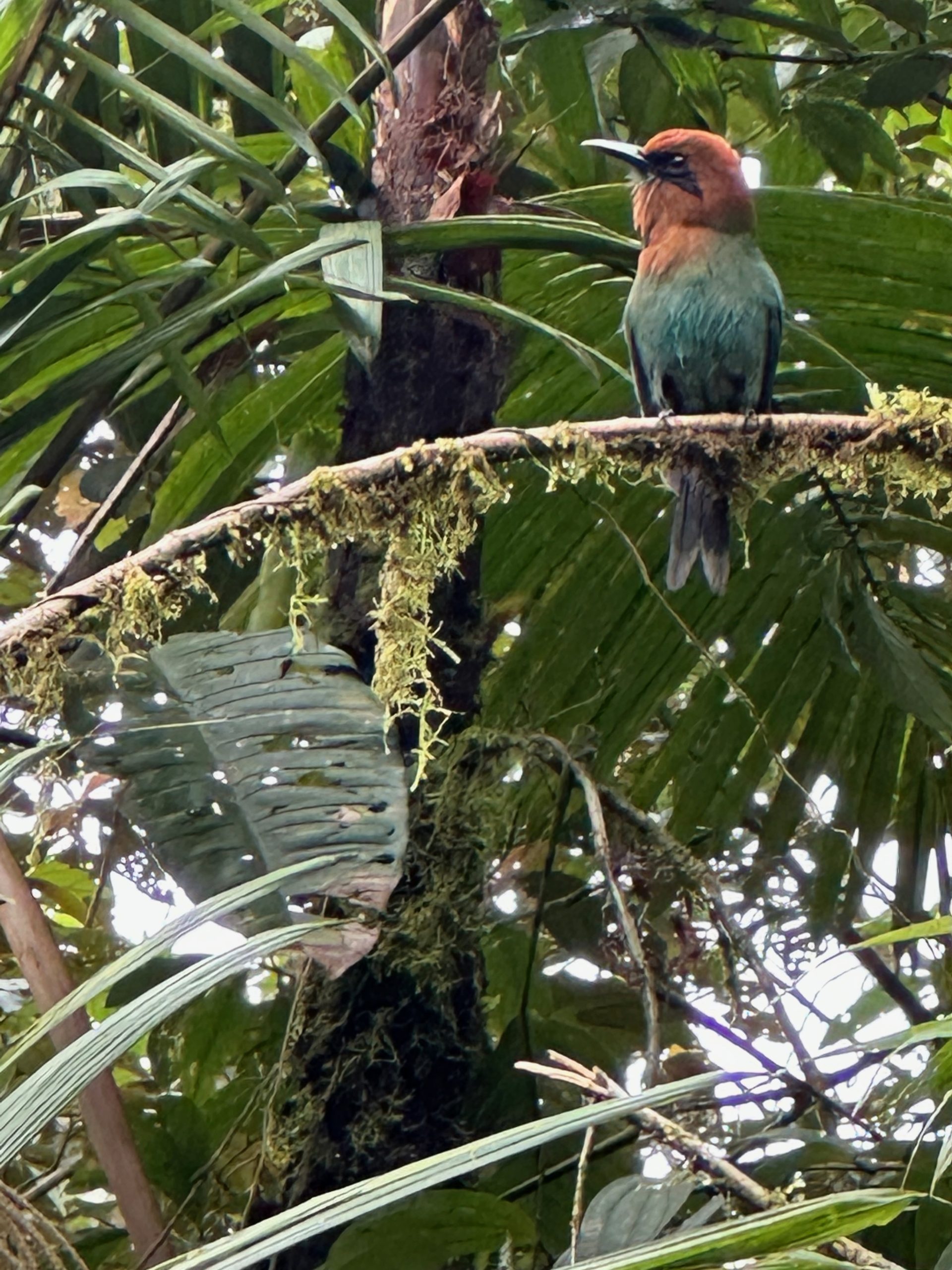
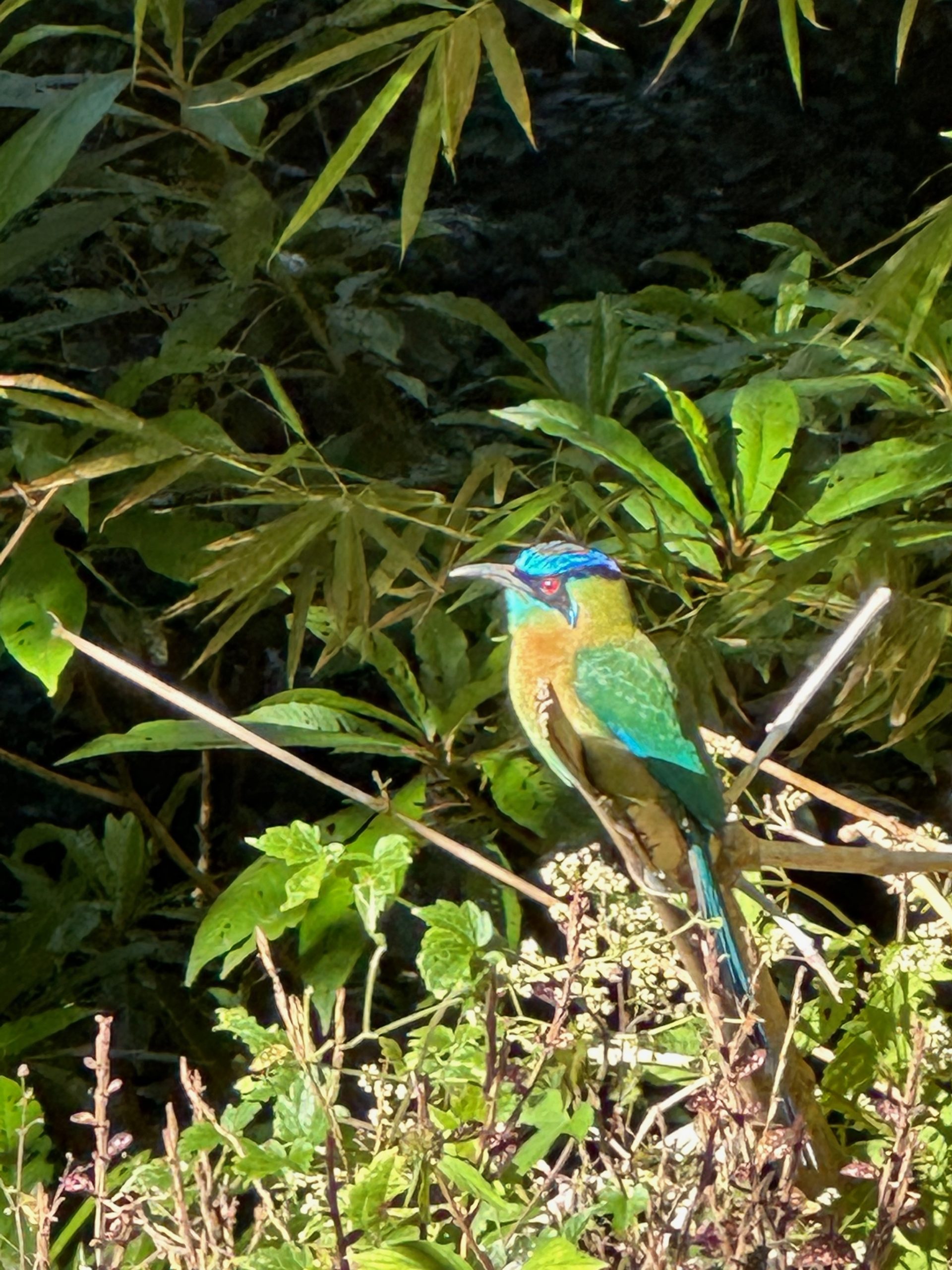
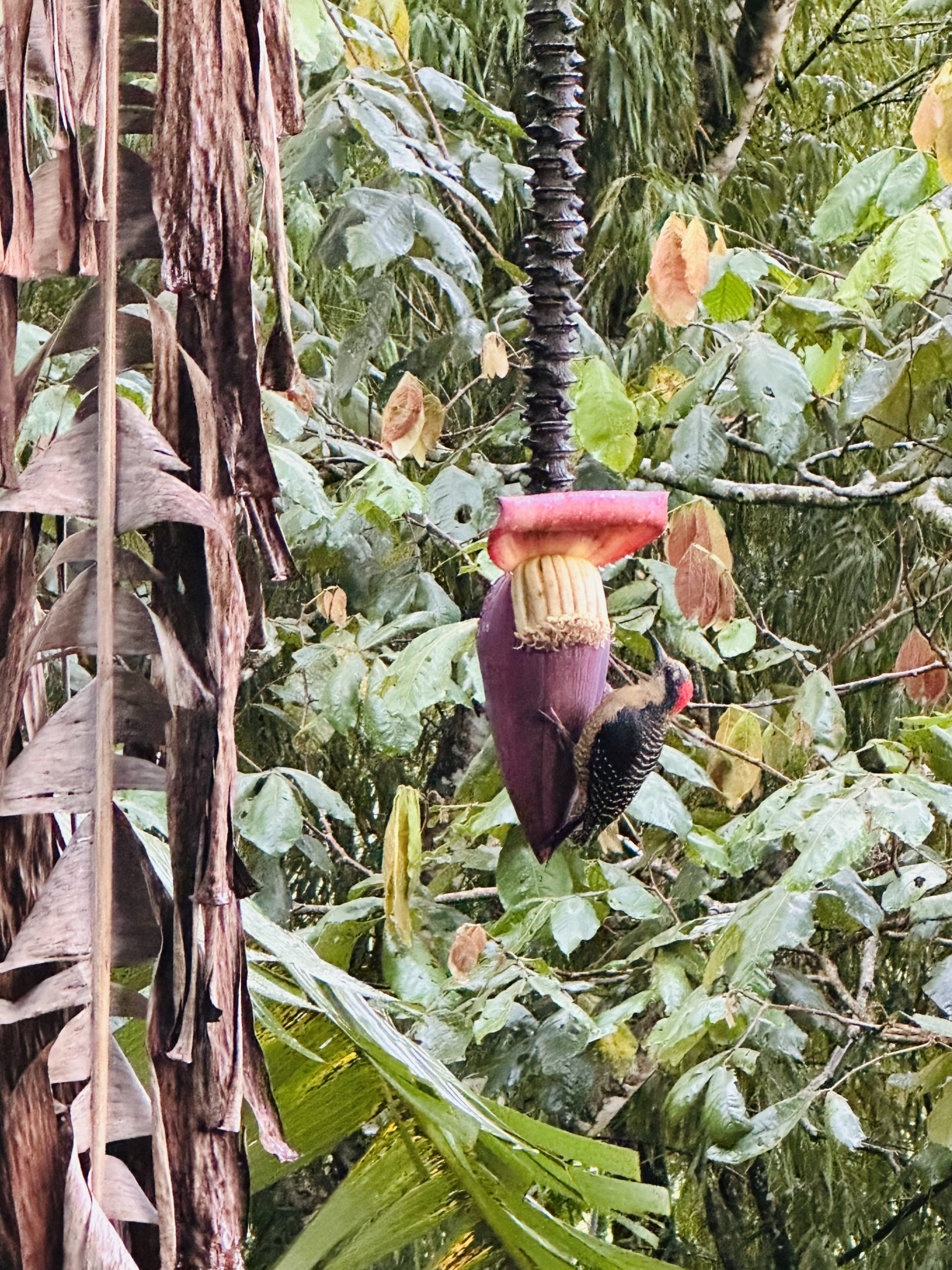
Nadia brought rocks from home to trade out for some from this land and we headed to Volcano Arenal where the switch would take place. We camped at something called an ecological park which I’m not sure what was eco about it, as people could rent ATV’s and tear up the trail, and bus after bus drove up the steep mountain to drop off tourists. Anyway, a downpour came while we were hiking to the foot of Arenal and every tourist turned back except for us and one other woman from Argentina, so we had the place to ourselves. The sun came back out while the mist engulfed the top of the volcano and allowed us to feel like we were in a dreamworld.
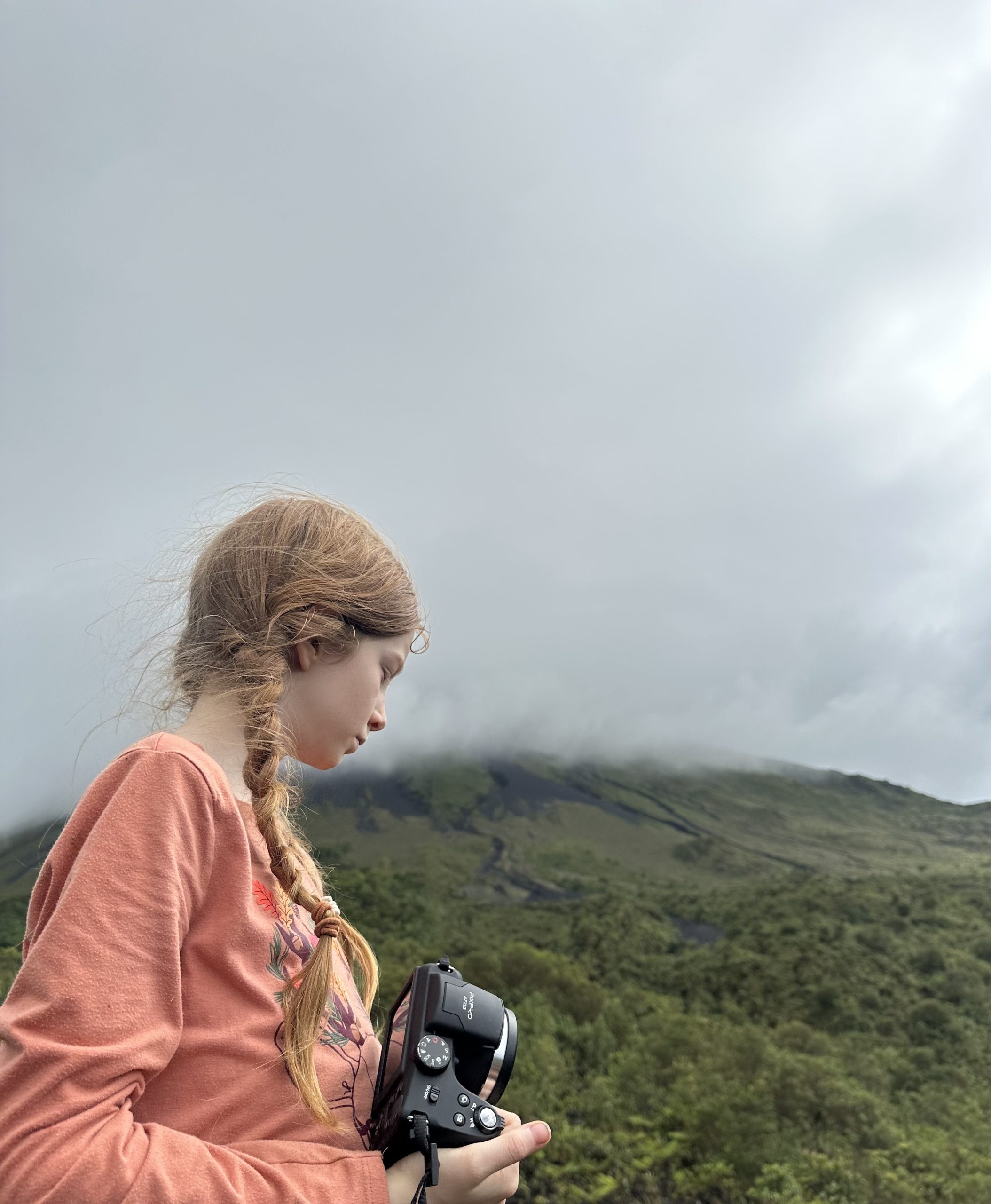
Nadia took photos and gathered little lava rocks to bring home to each of her classmates:-)
- Phragmipedium longifolium
- Acanthaceae family member
- Coccocypselum spp.
- Bromeliad
Being among the plants that lived in the volcanic rock was my favorite part of the trip.
We made our camp meals carefully, trying not to leave a trace as the Coatis were hungry and would hang around waiting for any droppings. They were cute, but I found the bands of them intimidating.
Nearby was the Tabocon thermal river, but the amount of people there- my gosh! So we waited to go until dawn, when there was hardly a person there. It’s a free hot springs (most have been commercialized and cost money) but also it’s a river heated from the volcano above, and you are held between lava rocks as the warm mineral water currents flow over you. Very nice, especially since I was terribly ready for a shower by now! The great Currasow, apparently a rare bird to see, sat on the tree next to where we soaked.
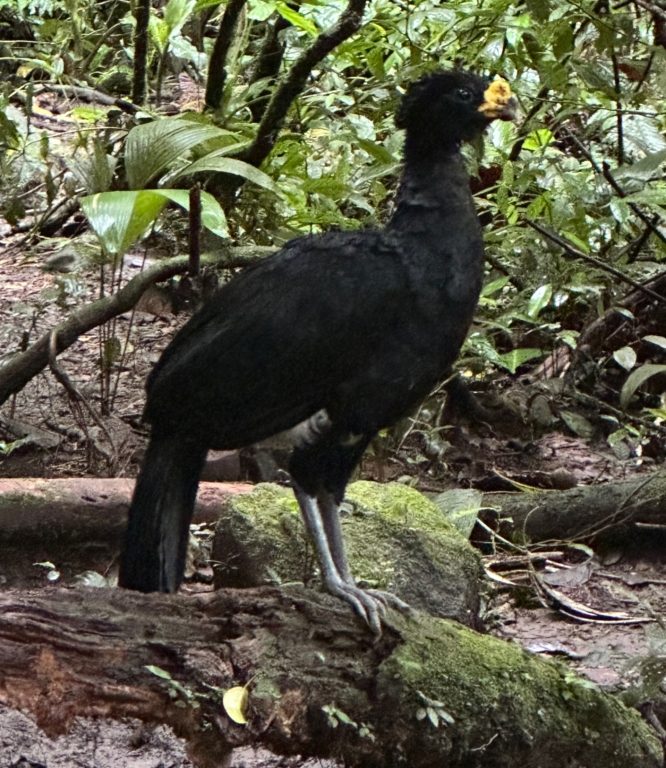
The Great Currasow
There was so much we wanted to see in such a short amount of time, we had to constantly let go of some opportunity in order to take another one. Such is life, right? We could have stayed in this area longer but wanted to see more of the country, so we headed south, keeping our eyes peeled for sloths! It was so comfortably cool in this area, but as soon as we hit the low roads, we were sweating the rest of the trip.
As we looked out among the Costa Rican landscape, day after day, driving, driving, driving, most of the time what we saw were cleared forests to make way for cattle or crops. Mostly cattle. Thousands, maybe millions, of cows. I don’t eat beef because of the environmental impact it has, and seeing all this desecrated landscape for cows made me ever so glad I don’t. Steep slopes were bare with mud and grass stubble and cows who looked like they were about to roll off the mountain. The cows had their bird friends, the cattle egret, and in some of the fields it would be a bucolic sight if you didn’t know that just a half century ago or less this was virgin forest. It made the place feel ‘pasture-ized,’ if you know what I mean.
The crops were terraced just as steeply- I don’t know how they can even plant and harvest them, the rows are so narrow and sloped. Amazing! In San Ramon they were growing miles of ornamental plants for the world’s floral industry.
I was in awe of how resourceful Costa Ricans were with tires-instead of letting them pile up in landfills, they turn them into useful objects-fences, retaining walls, tables, stairs, planters, sign post holders, path definers, feeding troughs and parking markers.
Everywhere we went we looked for sloths and monkeys because who wants to go to Costa Rica and not see them? Fortunately we were able to see 3 of the species of monkeys living there: howler, spider and squirrel. We did not see any of the famous white face monkeys, the Capuchins. A sloth was hanging out next to the barn where Nadia took a beach horseback ride. It was crawling around in the tree which was very exciting- to actually see a sloth in motion since they sleep so much. I imagined what it would have been like to watch a gentle giant ground sloth find its food, the megafauna that went extinct 10,000 years ago from human hunting. Not even the giant anteaters are here anymore- humans have killed them all off too.
Just before we hit the coastal route 34 we ate a late lunch in Orotina at a Bar. The restaurants are often called bars as people sit around drinking while watching fútbol. We got caught up in the Paris Saint Germain vs. Bayern Munich game with the locals. I had forgotten how addicting watching soccer is!
On to the coast where we found a fairly undeveloped beach to camp upon. What incredible shells! And so many sand dollars. And the groves of Tropical Almond trees (Terminalia catappa) feeding the loud and gorgeous Scarlet Macaws! Our necks hurt day after day from birdwatching!
Leafcutter Ants along with other species of ants, small and big, were everywhere. You cannot be afraid of ants and go camping on the beach. You leave them alone, they leave you alone. One of the most relaxing things of this trip was to just watch them do their thing. Apparently, the leaf cutter ants can collect the wrong leaf and an Inspector Ant will come by and tell them all to drop their leaves and get another kind. So you would see a pile of abandoned chopped leaves, and the ants moving along to another tree. If I weren’t a plant person, I would be an entomologist (or a Waldorf early-childhood teacher.)
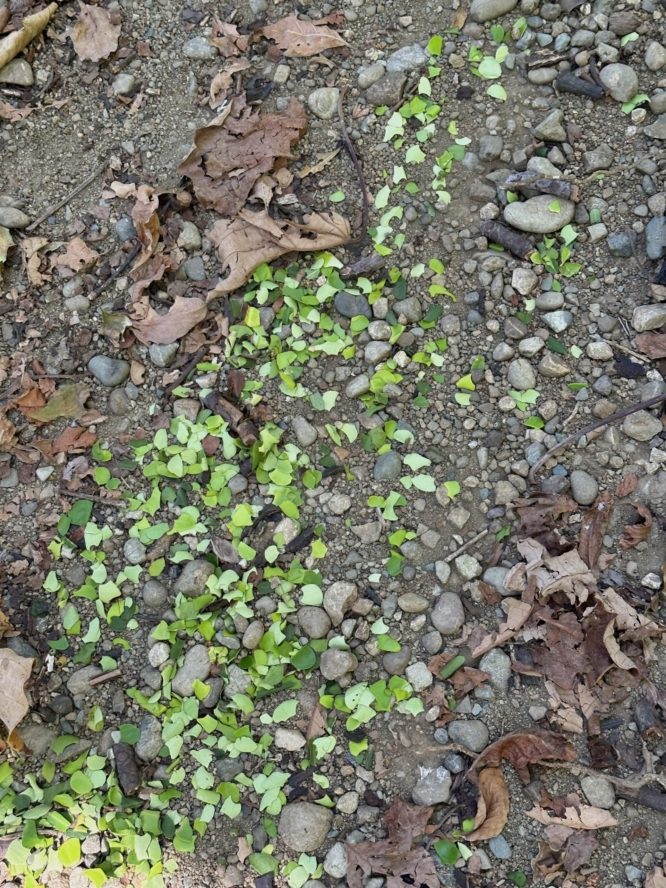
Inspector Ant said, “You’ve collected the wrong leaves, ants. Drop ’em!”
The ocean is intense. It’s not like swimming at Myrtle Beach or something. We didn’t go out far, and we didn’t go out between 9am and 4pm, as even with sunscreen, we would be burnt to a crisp. In the heat of the day, we harvested coconuts and drank that yummy water, watched ants, swung in the hammock, read, napped, explored in the shade, and Nadia played endlessly with sand, shells and whatever else she could collect.
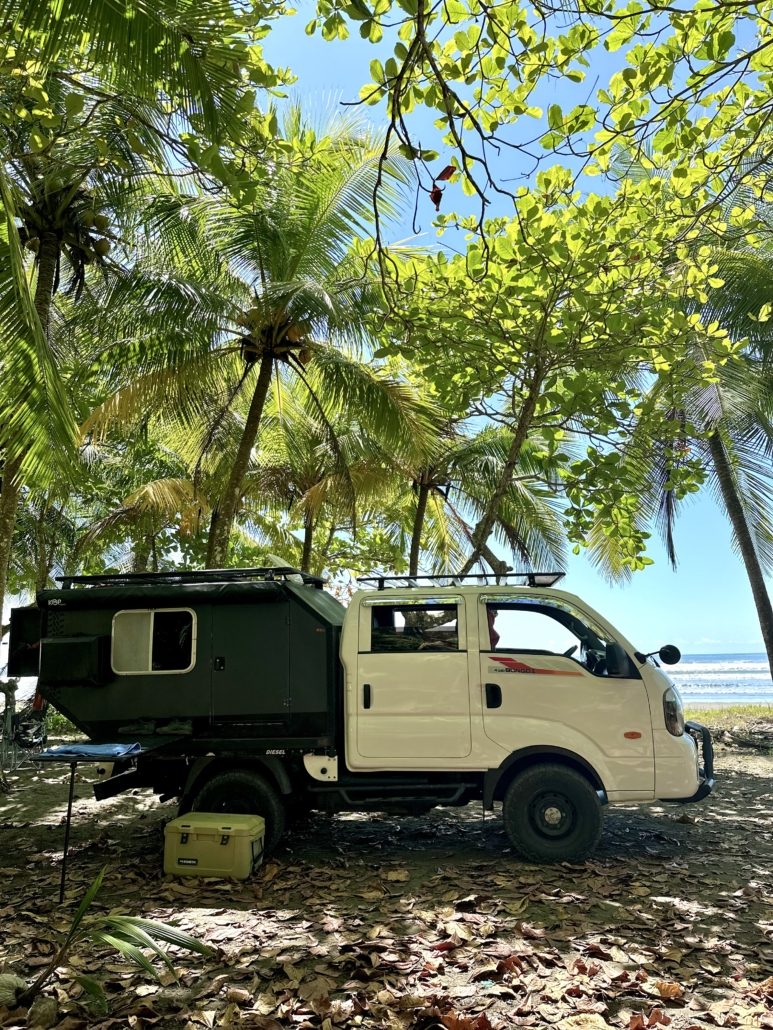
We made our way further south on foul smelling Route 34, passing through the bustling town of Dominical. Destination? The Osa Peninsula. On the way was Palma Tica land- palm oil trees planted mile after mile after mile. Occasionally there would be a small but smoky, smelly factory, processing the world’s supply of oil you will get in your cookies, pizza, chocolate, deodorant and practically everything else. Hard to avoid palm oil even if you want to. Here on Rt. 34, you can see the destruction the mono crop is causing. Mixed among the thousands of trees are the shacks, the poverty-stricken areas, where the workers who are making this tasty palm oil miracle come true for our convenience, find a meager way to live. Very hard to witness.
Another site of note are the graveyards. Tile boxes set inside chain link fences. Hundreds of them, mile after mile. I asked and searched on the internet but was not able to find out why they bury their dead in these above ground huge tile boxes that are all white, and then fence them in.
We rented a room in a little hotel in Puerto Jiménez where we all got hot (well, not freezing cold at least) showers, hooray! Hart is so hardcore though, he still slept in the bed of the camper truck! Here we arranged with a tour guide to take us into Corcovado National Park, down on the tip of Osa, the farthest south you can go in Costa Rica. The park will not allow you entry without a guide.

We had heard Corcovado was the last remaining primary forest in Pacific Central America but it turns out what wild forest is left is so small that you have to hike a couple nights to get to it, and we only did a day hike with our guide, Gerson. As we entered the park through Carate, which is named after the fungus people caught when they came here to mine for gold, what we mostly saw were banana trees. The whole area we hiked was gold mining territory in the 1940’s and still trying to heal from that disruption. Bananas are from Asia and have outdone may of the native trees. Abundant was the Ficus aka Higuerón, a native fig that grows wide and tall very rapidly, to restore cleared areas of the forest before it dies a young death, like Balsa. Some of the longer living native trees that come after the pioneering ones are Ceiba and Oaks.
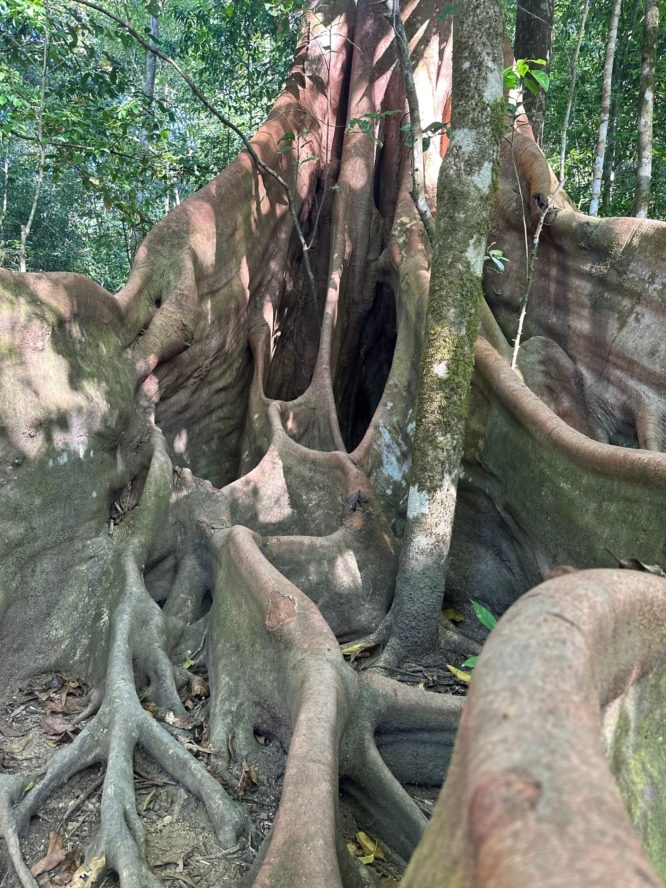
Fast growing pioneer tree of the Costa Rican jungle, Ficus
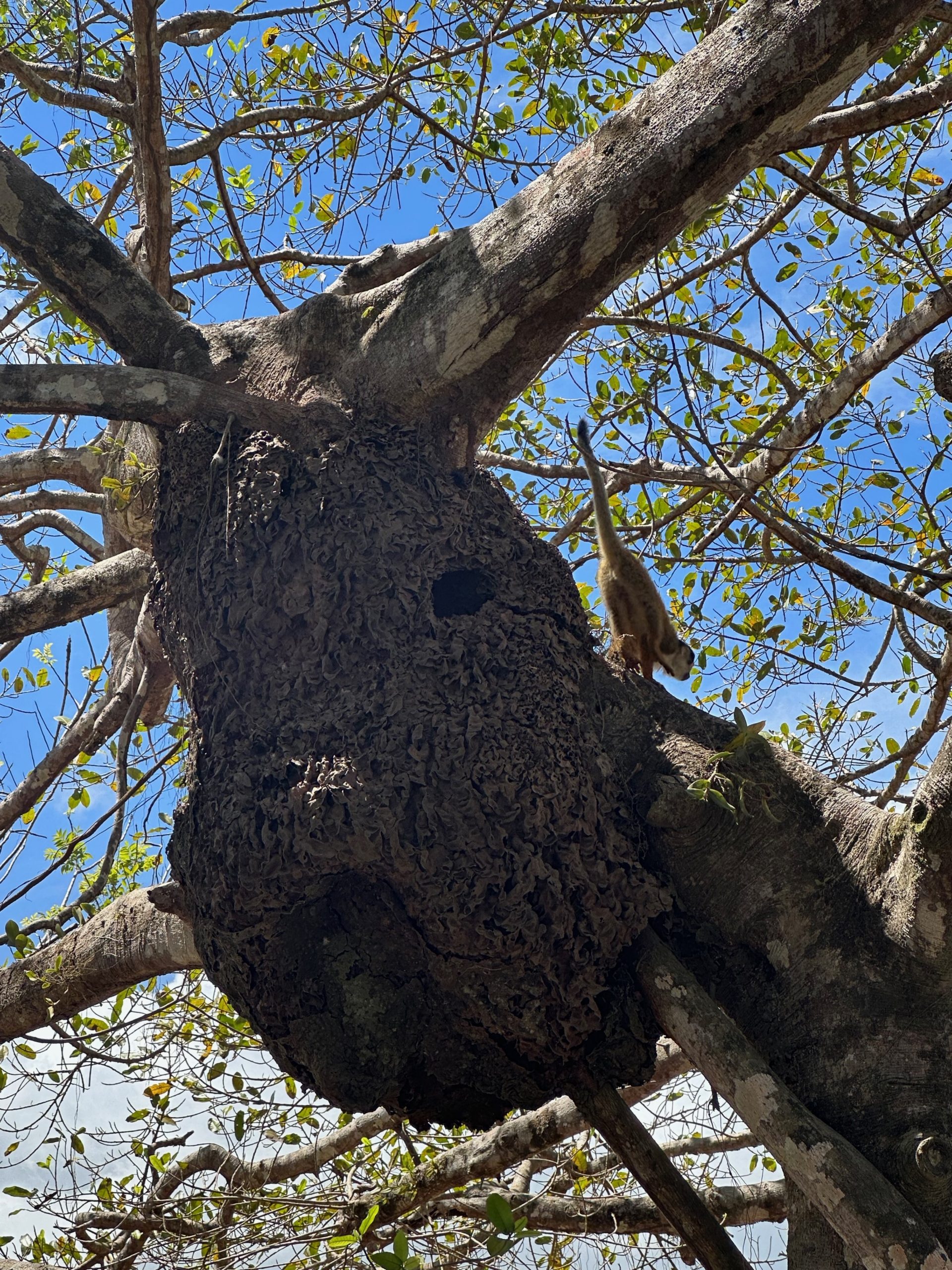
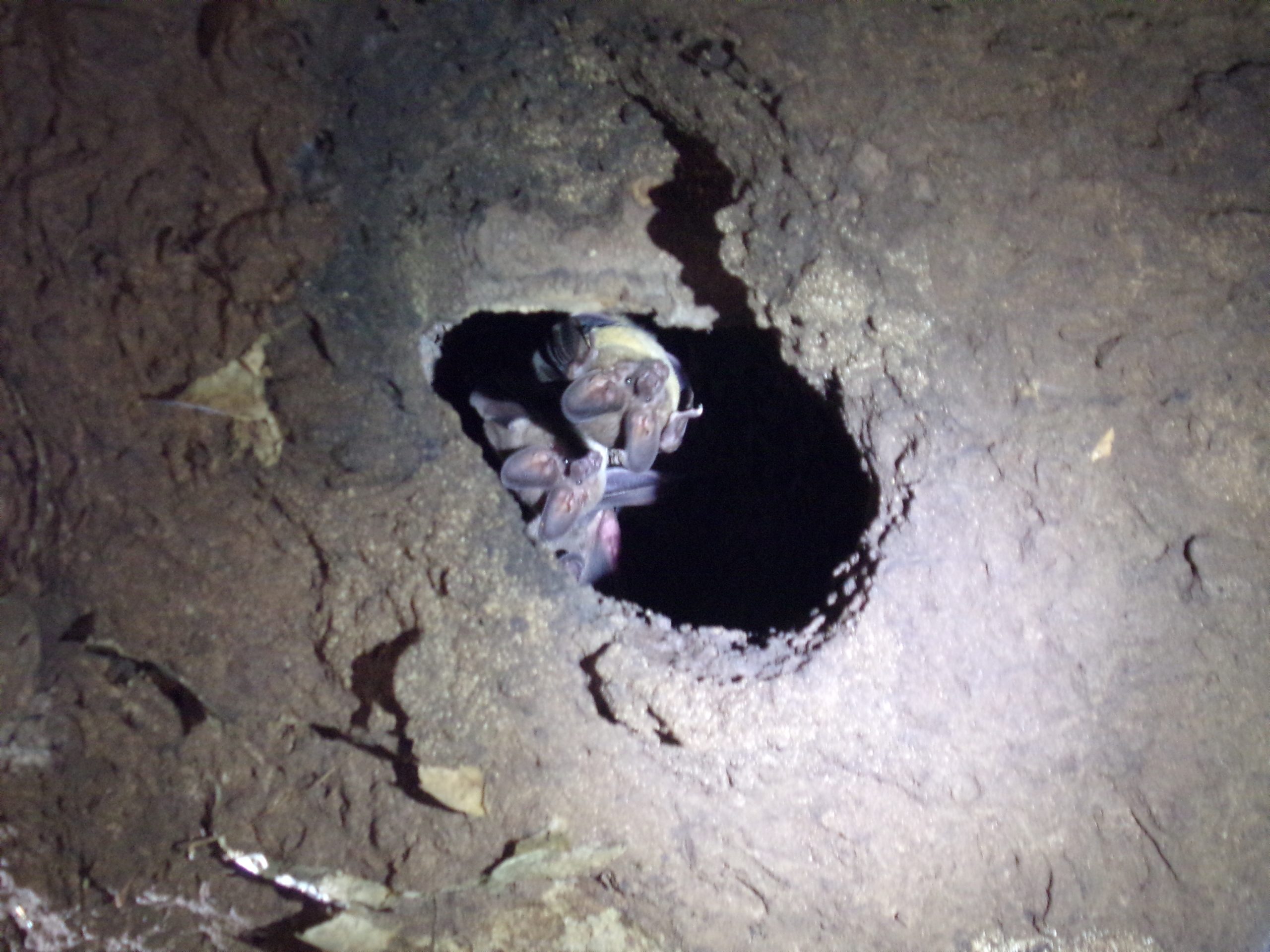
Termites are alive and well in Costa Rica and on this trail we were able to get up close to one of their nests and see a bat colony that had carved out a home inside the nest. Apparently this doesn’t hurt the termites and possible it helps them in ways we do not yet know. It definitely helps the bats as they were sleeping soundly inside until we shined a light in there and admired their cuteness! Gerson showed us where the tunnel is that leads to the termite nest and how you can break a piece off and the termites scurry, easy to catch and eat. We ate some raw and they tasted delicious, honestly! Like carrots! I had never eaten insects raw before, and this was a pleasant experience. But poor little bugs getting eaten alive:-(
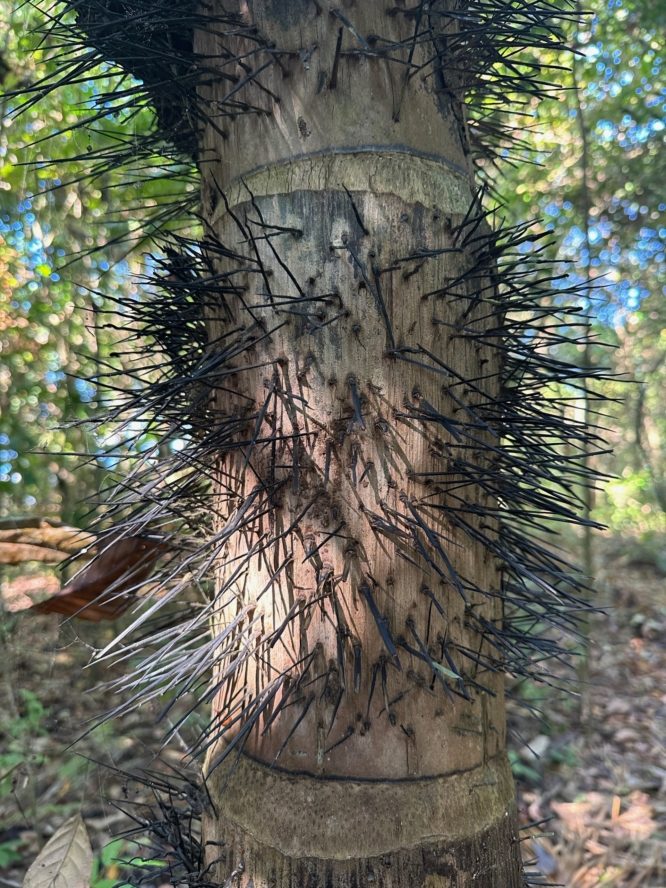
You definitely do not want to stumble along the path and grab this Black Heart Palm to brace your fall.
We saw more beautiful birds like the Trogon and some monkeys and coatis and morph butterflies and then came out of the jungle, upon a river that was flowing straight into the ocean. Pretty magical to swim in freshwater just a hundred yards from the sea! We were assured there were no crocodiles in this river, but they were in the rivers above and below?! We saw several crocodiles on the trip but not while we were swimming, fortunately!
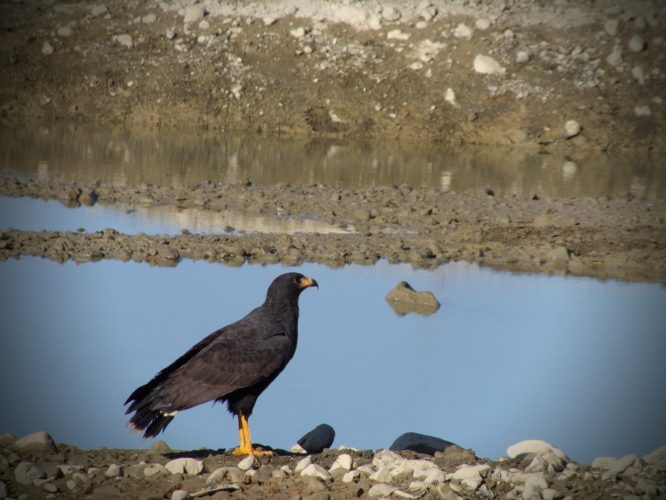
Black Hawk
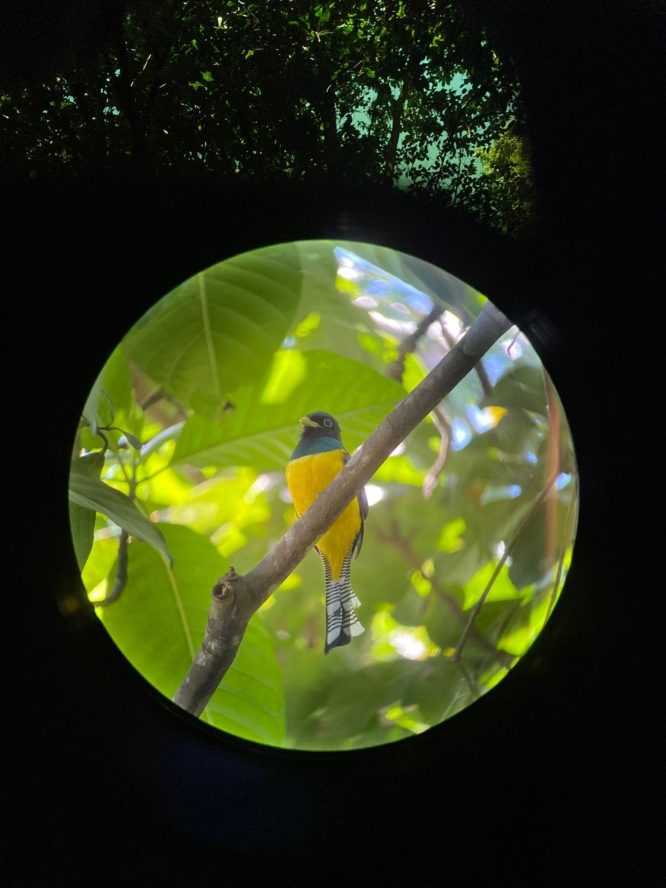
Trogon
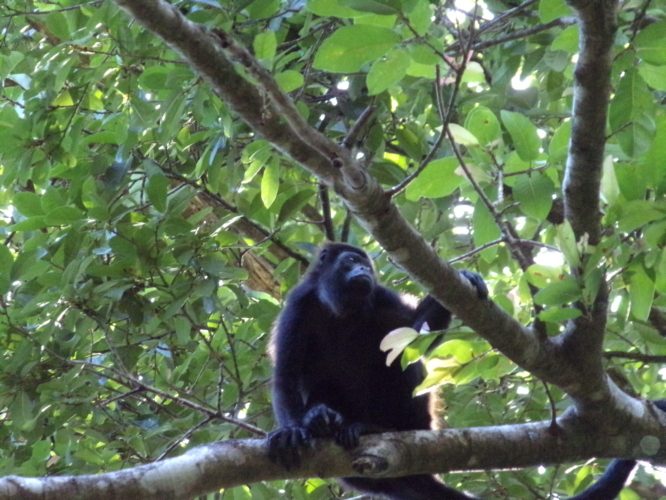
Howler Monkey
That evening we camped in Cabo Mato Palo, with a million hermit crabs. I am not kidding. The ground was alive and crawling! The Scarlet Macaws made so much racket and pelleted us with fruit from the trees, while the monkeys threw tree branches nearby and we tried not to take it personally. But clearly these animals did not want humans around.
And I pulled 14 ticks off Nadia and a few off of me and Hart. Be warned. It’s the jungle.
Nadia and I were quite sunburned at this point as we didn’t have the discipline Hart had to stay out of it when necessary. I was so ready to get home by now, but Hart and Nadia could have camped at Cabo Mato Palo for who knows how long, buying fish from the man on his moped and eating coconuts.
There was a botanical garden we had heard about, several hours north, so we left the beach and headed back into the mountains. Whippoorwills and other doves sang their songs and reminded me of home. Not being able to put toilet paper in the toilet made me long for home. Not being able to find soap or detergent anywhere in the whole country that wasn’t dyed, with an overpowering synthetic scent, was so odd. When did soap become something so toxic? At least in the states you can get dye and chemical-free soap. Here, even at the natural food stores, it is all synthetic. I will never travel to Central America again without a bag of laundry detergent and a bottle of castile soap. I will probably never travel to Central America again, period.
We got fancy and stayed in the Wilson Botanical Gardens guest bungalow at Las Cruces Research Station and toured the gardens of tropical plants from around the world and watched the healthy bird population doing their thing, like this Toucan who had a nest in this tree!
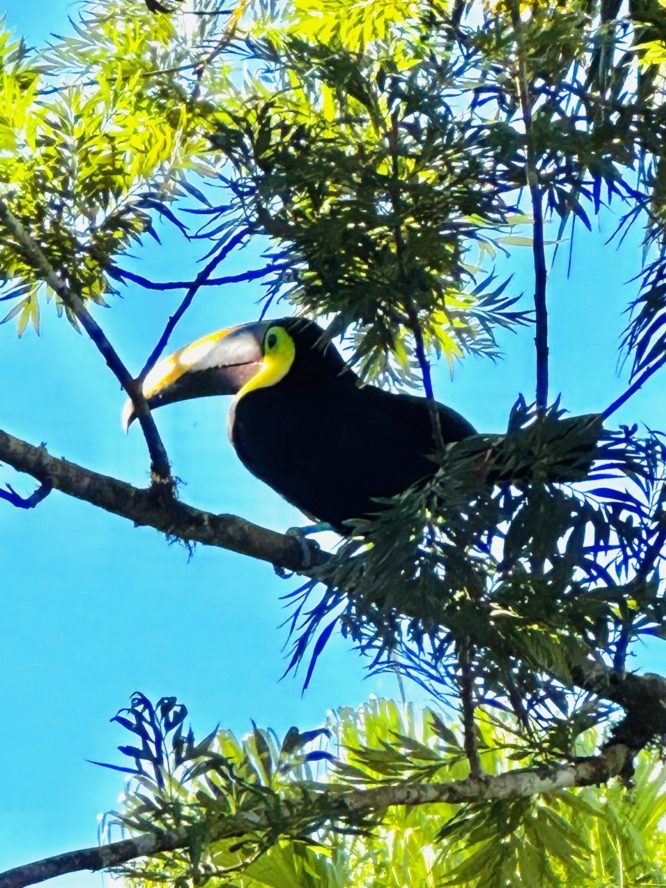
The signage at this garden was mostly incorrect- the story goes that college students visit and switch the signs around as a joke, plus the signs were so coated with tropical growth, you couldn’t read more than half of them anyway. I was hoping to finally learn the names of some of these mystery plants I had been meeting, but no such luck.

The last leg of our trip was back up to the coastal town of Dominical to meet up with Hart’s brother and wife and relish some family time. We enjoyed a waterfall in Uvita that wasn’t swamped with hoards of people.
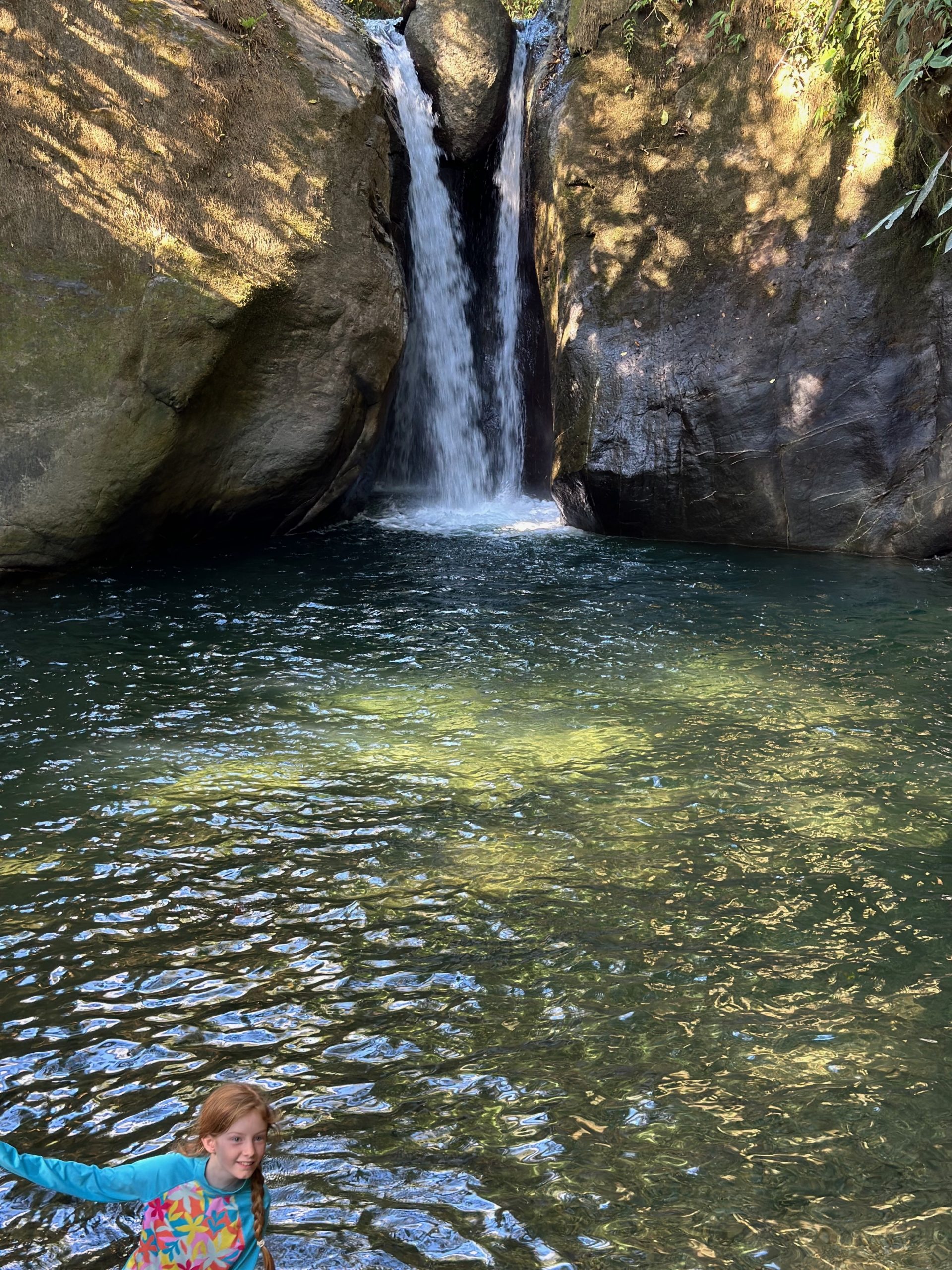
I really debated about writing a piece about this trip as you can probably already sense I have many heavy feelings about traveling and the state of our world that the reader may not want to entertain, and yet if you know me at all, I’m going to give the full picture of what I’m going through instead of some candy-coated imagery.
It is such privilege to travel. As the fun fellow from Bolivia who we met on the plane said, “Travel is the one thing where you spend lots of money to make you more rich.” I know having out of the country experiences broaden my perspectives, opens my mind and gives me personal insight into our fellow humans and the different plants, animals and landscapes that make up our huge world. All my life I have loved traveling. I dreamed of being a modern day Margaret Bourke-White, traveling as a photojournalist, but for the plants and healers of the world.
But something about this trip really negated that burning desire I have had and followed all my life. It changed me. Part of it is my age, maybe? I just don’t enjoy camping and traveling so rustically anymore. I’m tired. When I am not working at home, I want to go on a relaxing, slow-paced vacation. As an adventurer by nature though, this is hard to actually do. But most of all, I just don’t think I have any business traveling. I sense the stress of the land, and the impact we humans have. And the stress is multiplying rapidly. I see it all around me. Pretty soon we will have a world of only houses, factories, roads and crops- both plants and animals-that we eat, with very little wild in between. It already is so. Studies show that we have about 20% of the world’s wilderness left. 20%!!! Having been in Costa Rica in 2008 and then coming back, I was astounded at the development that has occurred just in those 15 years. We are turning into a planet of cows, chickens, fulfillment centers, dogs and their humans. For me, it is utterly devastating to behold.
For now, I will stay home and tend to the chickens, plants and humans nearby and observe the third-growth forests around me.
“Cabo Mato Palo”
I eat oats,
hear wild sea
crash against rocks
every few seconds
peripherally note my daughter
is safe,
content beyond the tongue of the tide,
herding hermit crabs of Cabo Mato Palo into
her tree bits crab hotel
of coconut shell, tropical almond hulls, mystery seeds and heart-shaped pods.
Macaws overhead making a racket
husband smoking his pipe, neck craned
studying their movements.
A large thunder roars from behind made by a small black monkey.
Can I keep this page open long enough to write?
A warm breeze whispers, “You must work for it.”
Living out of a camper has its advantages-
not much overhead to tend
why
don’t you go for a long aimless walk instead?
Encounter dogs, dogs, dogs and coati and sloths
hibiscus, banana, Ficus stragglers, Balsa, Mango
and Birds of Paradise
the Trogons and black hawks and grackles too,
seems like a living right to wander
aimlessly
yet somehow I am aware it is actually
a privilege.
I bow in gratitude.
